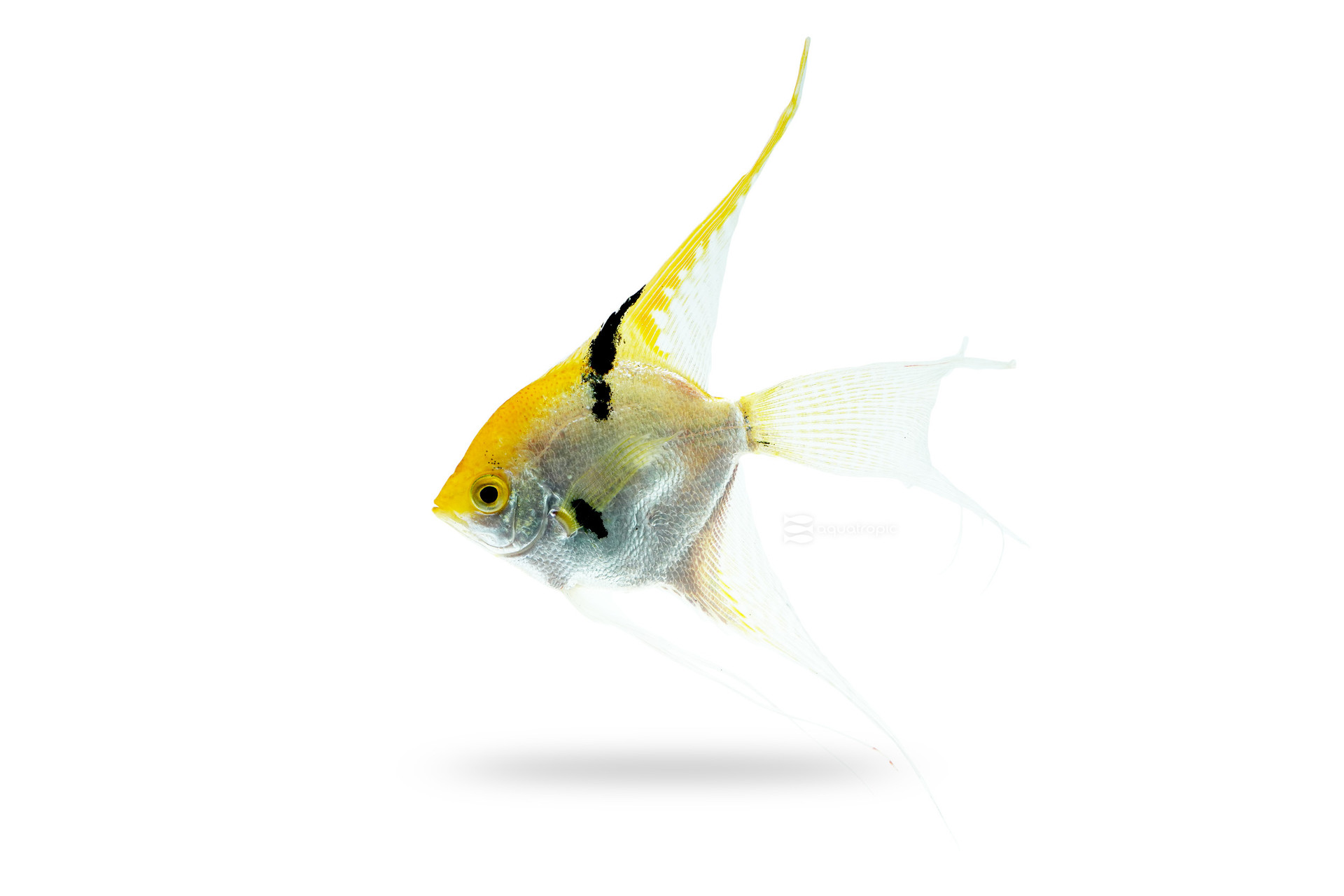Everyone Needs An Angel

The Angelfish (Pterophyllum scalare) is the most common species of angelfish kept in the aquarium hobby and belongs to the Cichlid family, Cichlidae. The true wild type specimens will have a tall, narrow body with long pelvic, dorsal, and anal fins and be silver in color with vertical dark bars. A huge specimen might reach six inches in length and eight inches in height!
While wild caught fish are rare in the aquarium hobby these days, the original fish would have come from many different river drainages in North Eastern South America, including the Amazon, Ucayali, Solimoes, Amapa, Oyapock, and Essequibo rivers. The habitat is slow moving water, usually swamps or flooded areas with lots of vegetation and debris (driftwood) to hide in. When wild collected, the most boldly marked individuals tend to come from the clearest water where their patterning assists in blending in with vertical vegetation.
While Angelfish are common in the hobby due to their popularity, their maximum adult size does require an aquarium of somewhat larger dimensions. Adults should be housed in an aquarium no shallower than 20 inches, with more being fine to accommodate for their long fins – reaching up to eight inches! Therefore, a 55 gallon aquarium should be the smallest tank one should consider housing a group of angelfish in. Live plants will make them feel right at home, and also provide adults with a natural place to spawn. Leaving an open area in the middle for them to stretch their fins a bit and move freely should also be considered. Angelfish are not overly aggressive, but will form pairs in aquariums and they will be defensive of eggs and territory. With their small mouth it is unlikely that they will eat other aquarium inhabitants unless they are truly miniscule. Angelfish are commonly kept with discus, smaller tetras, & Corydoras catfish.
All our Aquatropic angelfish are captive bred and will accept quality flake, pellets, and small sized meaty/frozen foods. The inclusion of live foods such as blackworms & brine shrimp can encourage breeding and promote natural feeding behavior, since wild angelfish would be hunting for small invertebrates in their natural habitat.
Angelfish are not the easiest fish to determine gender in. Most of the indicators to gender will only become visible once the fish enter spawning condition. As such, if you are interesting in paring them for breeding purposes, it makes the most sense to purchase a group of at least six fish, raise them in an appropriately sized aquarium to maturity then observe their behavior to notice when they start to pair off. The mating rituals of angelfish are quite interesting to observe for the home aquarist. Both parents will clean and prepare a nest site, this can be large plant leaves, a flat stone, or even the aquarium glass. After the eggs are adhered to the surface both the male and female fish will defend their territory, the eggs, and one another until the eggs hatch. At this point parenting can become questionable, because some angelfish will cannibalize their offspring. Generally older, more experienced pairs will trend away from this over time, but watch the newborns carefully.
Angelfish are one of the most popular, original aquarium fish and for good reason. They make stunning centerpiece displays for tall enough aquariums, while exhibiting interesting behavior and their bold markings which now come in a cornucopia of aquacultured varieties will leave an option for anyone that has the desire to keep one, or a group of these South American gems. Call your LFS today, and ask for captive bred Angelfish from Quality Marine today!